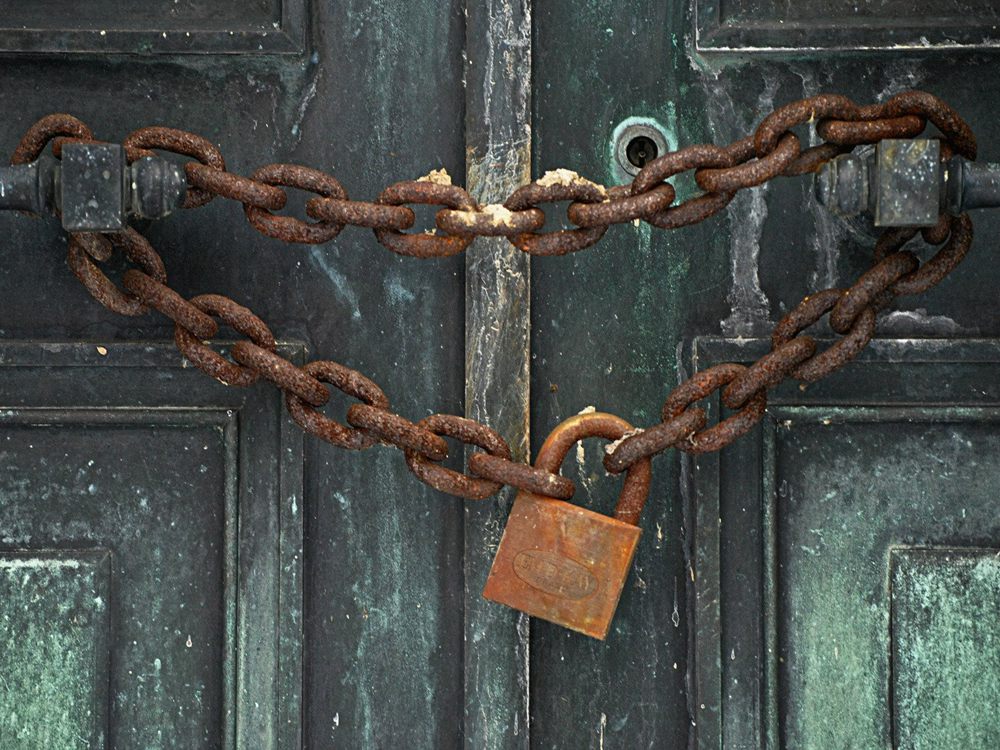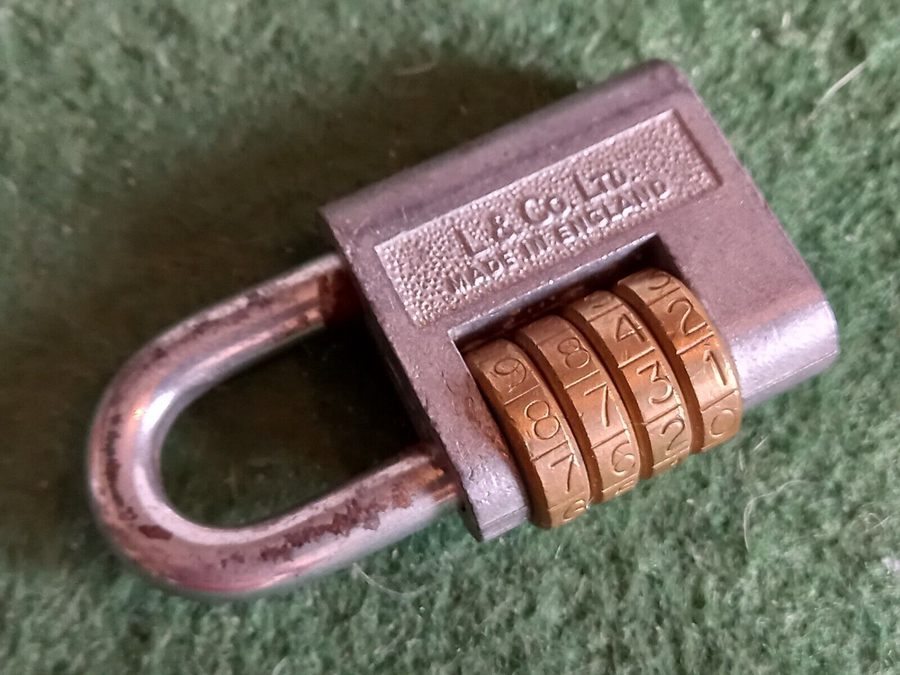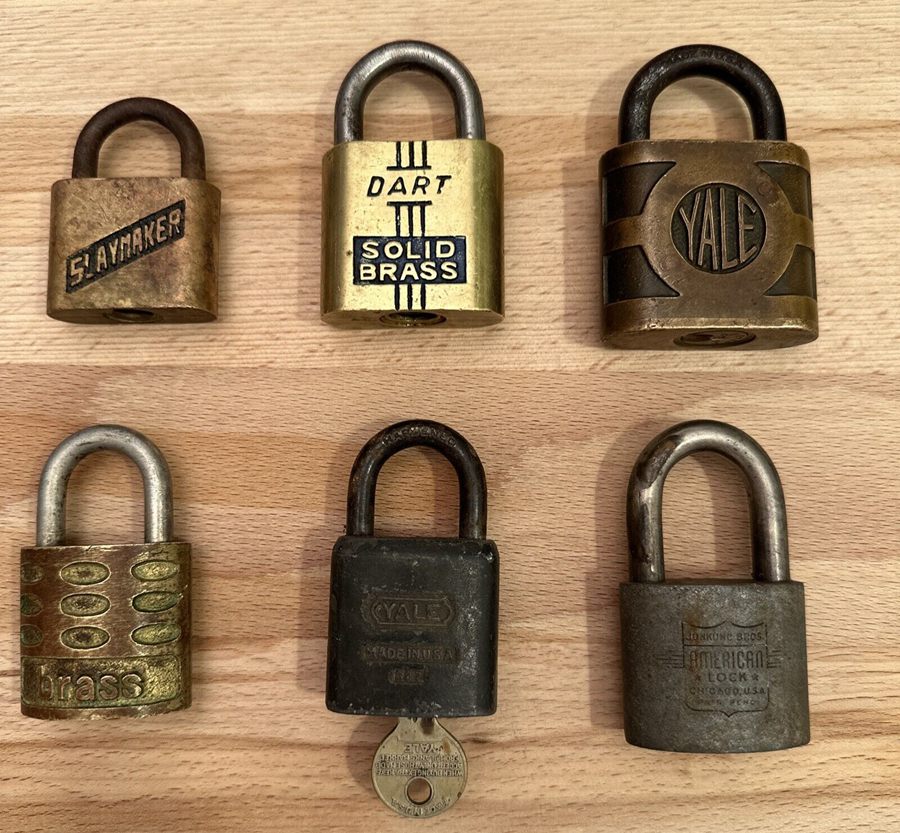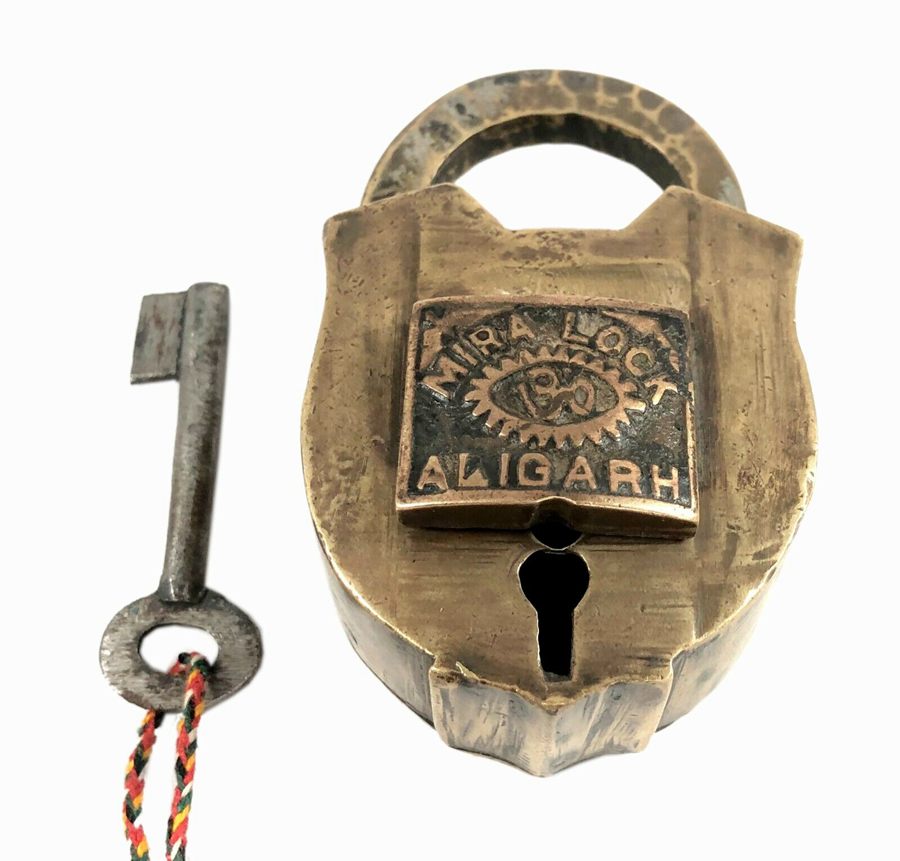If you’re a collector of antique padlocks or just interested in learning more about them, you’ve come to the right place. Antique padlocks are fascinating objects that have been around for centuries, and they come in a wide variety of shapes, sizes, and styles. In this article, we’ll take a closer look at the different types of antique padlocks, how to identify them, and what they might be worth.
First, let’s talk about the different types of antique padlocks. There are many different styles of antique padlocks, including lever locks, warded locks, combination locks, and more. Each type of lock has its own unique features and mechanisms, and some are more valuable than others. By learning about the different types of antique padlocks, you can better understand their history and value.
Next, we’ll discuss how to identify antique padlocks. Identifying antique padlocks can be tricky, as there are many different factors to consider, such as the age of the lock, the materials it’s made from, and any unique markings or designs. However, with some basic knowledge and a keen eye, you can learn to identify antique padlocks and determine their value. We’ll go over some tips and tricks for identifying antique padlocks in this article.
Table of Contents
The History & Evolution of Antique Padlocks
Antique padlocks have been used for centuries to secure valuable items and property. These locks have evolved over time, with different types and styles being developed to meet the changing needs of society.
The earliest known padlocks date back to ancient Rome, where they were used to secure chests and boxes. These locks were made of iron and featured a simple mechanism that could be opened with a key.
During the Middle Ages, padlocks became more complex, with intricate designs and mechanisms that made them more difficult to pick. These locks were often used to secure gates and doors, as well as chests and boxes.
In the 18th and 19th centuries, padlocks underwent a significant evolution, with the development of new materials and manufacturing techniques. This led to the creation of more durable and secure locks, such as the lever lock and the combination lock.
By the early 20th century, padlocks had become a common sight in households and businesses around the world. They were used to secure everything from safes and lockers to bicycles and gates.
Today, antique padlocks are highly sought after by collectors and enthusiasts. They offer a glimpse into the past, and provide a tangible link to the history of security and protection.
In summary, antique padlocks have a rich history and have evolved over time to meet the changing needs of society. From simple iron locks to complex lever and combination locks, these devices have played an important role in securing valuable items and property.
How to Tell If a Padlock Is Antique or Old
If you are interested in purchasing an antique padlock, it is essential to know how to identify one. Here are some tips to help you determine if a padlock is antique or old:
1. Check for Rust
Not every rusty padlock is antique, but it’s worth checking. An antique padlock will have a unique patina that develops over time. If the rust looks too uniform, it may be a sign that the padlock is not antique.
2. Look for Markings
Antique padlocks often have markings that can help identify their age and origin. Look for the manufacturer’s name, logo, or patent number. These markings can be found on the shackle, body, or keyhole.
3. Inspect the Pulling Mechanism
Antique padlocks have a different pulling mechanism than modern ones. To check this, tension the shackle and position the pins. Next, get a magnet. If it sticks to the pins, you might have an old padlock worth $1000. If not, it might be new!
4. Check the Keyhole
Antique padlocks often have a unique keyhole shape, which can help identify their age and origin. Look for keyholes that are round, oval, or heart-shaped. Modern padlocks typically have a standard keyhole shape.
5. Examine the Material
Antique padlocks were often made from brass, iron, or steel. If the padlock is made from plastic or aluminum, it is likely not antique.
By following these tips, you should be able to identify an antique padlock and avoid purchasing a fake or replica. Remember, always do your research and buy from a reputable seller.
4 Types of Antique Padlock and Their Values
When it comes to antique padlocks, there are four main types that are commonly found in collections. Each type has its own unique features and value. In this section, we will explore the four types of antique padlocks and their values.
Lever Padlocks
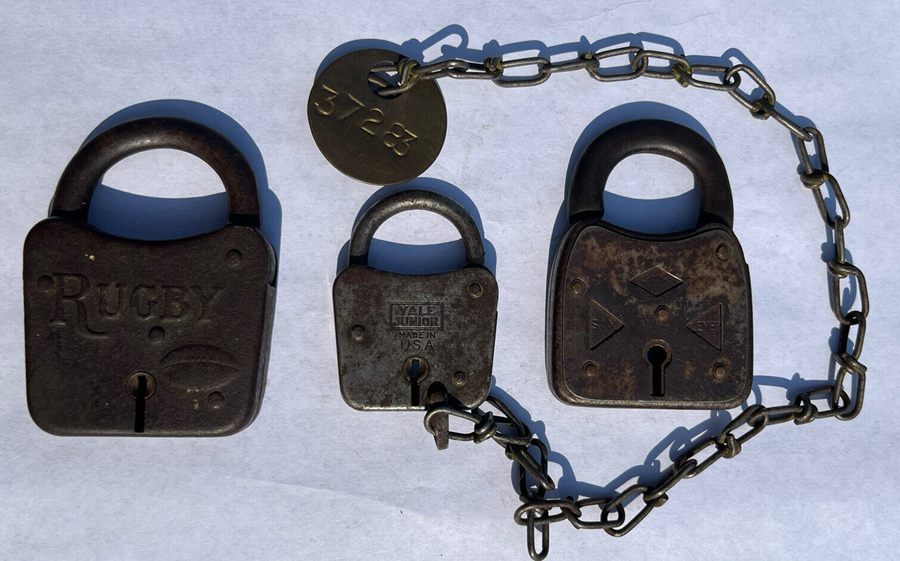
Lever padlocks are one of the oldest types of padlocks and were commonly used in the 18th and 19th centuries. These padlocks have a series of levers inside the lock that must be lifted to a certain height to unlock the lock. Lever padlocks are highly collectible and can be worth several hundred dollars, depending on their age, condition, and rarity.
Combination Padlocks
Combination padlocks are another popular type of antique padlock. These locks use a combination of numbers or letters to unlock the lock. Combination padlocks are highly sought after by collectors, especially those that are made of brass or steel. The value of a combination padlock depends on its age, condition, and rarity. Combination padlocks can range in value from a few dollars to several hundred dollars.
Keyed Padlocks
Keyed padlocks are one of the most common types of antique padlocks. These locks use a key to unlock the lock. Keyed padlocks can be made of brass, steel, or iron. The value of a keyed padlock depends on its age, condition, and rarity. Keyed padlocks can range in value from a few dollars to several hundred dollars.
Push-Button Padlocks
Push-button padlocks are a more modern type of padlock, but antique versions can still be found. These locks use a series of buttons to unlock the lock. Push-button padlocks are not as highly collectible as other types of antique padlocks, but they can still be worth a few dollars to collectors.
In conclusion, antique padlocks come in many different types and styles, each with its own unique features and value. Whether you are a collector or just interested in the history of these locks, there is no denying the beauty and craftsmanship of antique padlocks.
10 Factors to Identify & Value Antique Padlocks
1. Age
The age of an antique padlock is a crucial factor in determining its value. Generally, older padlocks are more valuable than newer ones. However, the age of a padlock is not always easy to determine. Here are some factors to consider when trying to determine the age of an antique padlock:
- Keyhole: The shape of the keyhole can give you an idea of the padlock’s age. Square keyholes were common in the 19th century, while round keyholes became more popular in the early 20th century.
- Materials: The materials used to make the padlock can also indicate its age. Older padlocks were often made of brass or iron, while newer ones may be made of steel or aluminum.
- Design: The design of the padlock can also give you an idea of its age. Padlocks with intricate designs were more common in the 19th century, while simpler designs became more popular in the 20th century.
- Maker’s Mark: If the padlock has a maker’s mark, you can use it to determine its age. Research the maker’s mark to find out when the company was in business.
Once you have determined the age of the padlock, you can use the following table to get an idea of its value based on its anvil shape:
| Antique Anvil’s Shape | Average Valuation |
|---|---|
| Uniform Cube, 4-straight sides | $500 – 600 |
| Rounded Rectangle with One Horn | $450 – 500 |
| Rounded Rectangle with Two Horns | $500 – 600 |
| Cylindrical, Half-Round | $300 – 350 |
| Pyramid, Triangular | $100 – 120 |
| Tear Drop Anvil | $100 – 150 |
| Stepped Anvil | $70 – 80 |
2. Brands
When it comes to antique padlocks, certain brands can significantly impact their value. Here are a few noteworthy brands to keep an eye out for:
Slaymaker
Slaymaker is a well-known brand that produced padlocks from the mid-19th century until the 1960s. They were known for their high-quality construction and innovative designs. Slaymaker padlocks with unique features, such as ornate engravings or unusual shapes, can fetch a high price on the market.
Yale & Towne
Yale & Towne is another brand that is highly sought after by collectors. They produced padlocks with intricate designs and patented many locking mechanisms that are still used today. Yale & Towne padlocks with their original keys can be especially valuable.
Corbin
Corbin is a brand that produced padlocks from the mid-19th century until the 1950s. They were known for their innovative designs and high-quality construction. Corbin padlocks with unique features, such as ornate engravings or unusual shapes, can fetch a high price on the market.
Valuation Table for Brand
Here is a table that shows the average valuation of antique padlocks based on their brand:
| Brand | Average Valuation |
|---|---|
| Slaymaker | $50 – $200 |
| Yale & Towne | $100 – $300 |
| Corbin | $50 – $200 |
It’s important to note that these valuations are based on the average price of antique padlocks from these brands and can vary based on factors such as condition, rarity, and age. When purchasing an antique padlock, it’s important to do your research and consult with a reputable appraiser to ensure that you are getting a fair price.
3. Materials
Antique padlocks were typically made from a variety of materials including brass, iron, steel, and copper. The type of material used can often affect the value of the padlock. For example, brass padlocks tend to be more valuable than iron or steel padlocks due to their aesthetic appeal and durability.
4. Condition
The condition of an antique padlock is a crucial factor in determining its value. Collectors prefer padlocks that are in excellent condition with minimal signs of wear and tear. Here are some factors that affect the condition of an antique padlock:
Rust
Rust is a common problem with antique padlocks. It can affect the functionality of the lock and make it difficult to open. Rust can also cause damage to the metal, which can reduce the value of the padlock. If you come across an antique padlock with rust, it is best to consult a professional before attempting to remove it.
Key
The key is an essential component of an antique padlock. If the key is missing or damaged, it can significantly reduce the value of the lock. Collectors prefer padlocks that come with their original keys. If the key is missing, it is possible to have a replacement made, but it will not be the same as the original.
Patina
Patina refers to the natural aging of the metal over time. It can give an antique padlock a unique and desirable appearance. However, if the patina is too heavy, it can obscure the details of the lock and make it difficult to identify. Collectors prefer padlocks with a light to moderate patina.
5. Rarity
One of the most significant factors that affect the value of antique padlocks is their rarity. The rarer the padlock, the higher its value. Rarity can be determined by various factors such as the manufacturer, the age, the design, and the materials used.
Manufacturers such as Yale, Slaymaker, and Corbin produced a vast number of padlocks during the 19th and early 20th centuries. However, some of their designs are rare and highly sought after by collectors. For instance, Yale’s “Double Bit” padlock is a rare find, and its value can range from $500 to $800.
Age is another factor that can affect the rarity of a padlock. The older the padlock, the rarer it is, and the more valuable it becomes. For example, a padlock from the 18th century is exceedingly rare and can fetch a high price at auction.
The design of a padlock can also make it rare. Some designs were only produced in limited quantities or for a short period, making them rare and highly sought after. For instance, padlocks with intricate engravings or unique shapes are often rare and valuable.
The materials used to make a padlock can also affect its rarity. Padlocks made from brass, iron, or steel are common, but those made from silver or gold are rare and highly valuable. For example, a padlock made from solid silver can fetch a price of $500 or more.
6. Patents
Patents are an important factor to consider when evaluating the value of antique padlocks. The patents on a padlock can indicate the level of innovation and uniqueness of the lock, which can greatly affect its value.
One example of a patented antique padlock is the Colton’s Patent padlock, which was patented on January 6, 1844. This padlock features a unique combination lock mechanism that uses seven wheels to create a complex locking system. This type of antique padlock can be highly sought after by collectors, and can fetch prices upwards of $1,700 at auction.
Another patented antique padlock is the “Everlasting” padlock, which was patented in 1876. This padlock features a unique shackle design that allows it to be opened by a key on one side, and a combination on the other. This type of padlock can be highly desirable to collectors due to its unique design and functionality, and can fetch prices upwards of $500 at auction.
7. Size
The size of an antique padlock can have a significant impact on its value. Generally, larger padlocks are more valuable than smaller ones. However, there are exceptions to this rule, such as when a smaller padlock is particularly rare or has unique features.
When considering the size of an antique padlock, there are a few factors to keep in mind. These include the overall dimensions of the lock, as well as the size of the keyhole and shackle. The shape of the lock can also affect its value.
Here is a table of average valuations based on the shape of the antique padlock:
| Antique Padlock Shape | Average Valuation |
|---|---|
| Large and Ornate | $800 – $1,000 |
| Medium-Sized and Decorative | $400 – $600 |
| Small and Simple | $100 – $150 |
When it comes to determining the size of an antique padlock, it’s important to measure the lock itself, as well as the shackle and keyhole. This information can be helpful when researching the value of a particular lock or comparing it to other antique padlocks.
In general, larger antique padlocks are more valuable than smaller ones, but it’s important to consider other factors as well, such as the lock’s condition, rarity, and historical significance. By taking all of these factors into account, you can get a more accurate idea of the value of an antique padlock.
8. Weight
The weight of an antique padlock is an important factor that affects its value. Generally, the heavier the padlock, the more valuable it is. This is because heavier padlocks were usually made with more durable materials, such as iron or steel, which were more expensive to produce.
When evaluating the weight of an antique padlock, it is important to consider the weight of the shackle as well as the body. The shackle is the part of the padlock that secures it to the object it is locking, and it can be made of various materials, including brass, iron, or steel.
One way to determine the weight of an antique padlock is to use a scale. Antique padlocks can range in weight from a few ounces to several pounds, depending on their size and construction. It is important to note that the weight of an antique padlock does not necessarily correspond to its size or level of complexity.
Final Thoughts
In conclusion, antique padlocks are a fascinating piece of history that can provide valuable insights into the past. Whether you are a collector, historian, or simply someone who appreciates the craftsmanship of bygone eras, antique padlocks are a great addition to any collection.
When it comes to identifying antique padlocks, it’s important to consider the type, age, materials, shackle patterns, brands, and colors of the lock. Combination and steel cable padlocks are two of the most common types of antique padlocks that you may come across.
When determining the value of an antique padlock, it’s important to consider its rarity, condition, and historical significance. A padlock from a well-known brand or one with an interesting backstory may be more valuable than a generic padlock in poor condition.
Overall, antique padlocks are a unique and interesting piece of history that are worth exploring. Whether you’re a collector, historian, or simply someone who appreciates the craftsmanship of the past, antique padlocks are a great addition to any collection.
FAQ
If you’re new to collecting antique padlocks, you may have some questions about the types, identification, and value of these unique items. Here are some frequently asked questions to help guide you:
What are the different types of antique padlocks?
Antique padlocks come in various types, including:
- Combination padlocks
- Key padlocks
- Lever padlocks
- Spring padlocks
- Screw key padlocks
- Antique handcuffs
- Antique leg irons
Each type has its own unique features and history, making them fascinating to collectors.
How can I identify an antique padlock?
Identifying an antique padlock can be challenging, but there are several things to look for. Check for any markings on the lock, such as a manufacturer’s name or logo. You can also examine the lock’s construction, material, and design to help determine its age and origin. Researching the lock’s history and origin can also provide valuable clues.
How much is an antique padlock worth?
The value of an antique padlock depends on several factors, including its rarity, age, condition, and historical significance. Some antique padlocks can be worth hundreds or even thousands of dollars, while others may only be worth a few dollars. It’s essential to do your research and consult with experts to determine the value of your antique padlock accurately.
Where can I find antique padlocks for sale?
Antique padlocks can be found at antique shops, flea markets, and online marketplaces such as eBay and Etsy. However, it’s crucial to be cautious when purchasing antique padlocks online, as there are many counterfeit and reproduction locks on the market. Always do your research and buy from a reputable seller.
How should I care for my antique padlock?
To preserve the value and condition of your antique padlock, it’s essential to handle it with care. Avoid using harsh chemicals or abrasive materials to clean the lock, as this can damage the metal and remove any patina. Store the lock in a dry, cool place, away from direct sunlight and moisture. If the lock needs to be oiled, use a high-quality lubricant specifically designed for antique locks.

